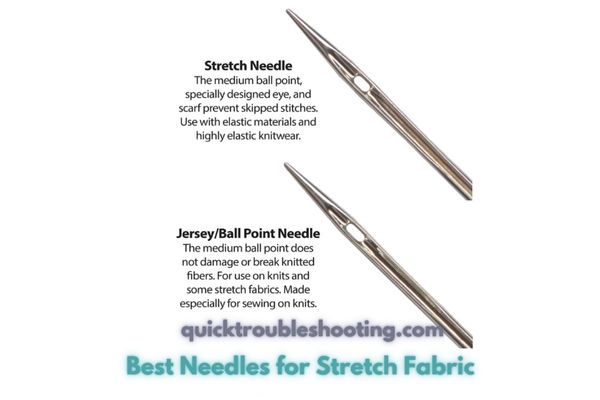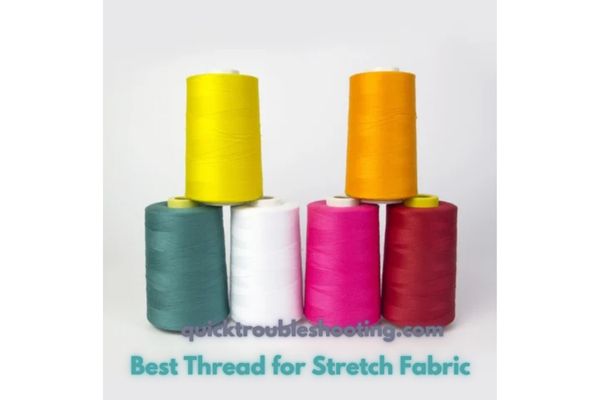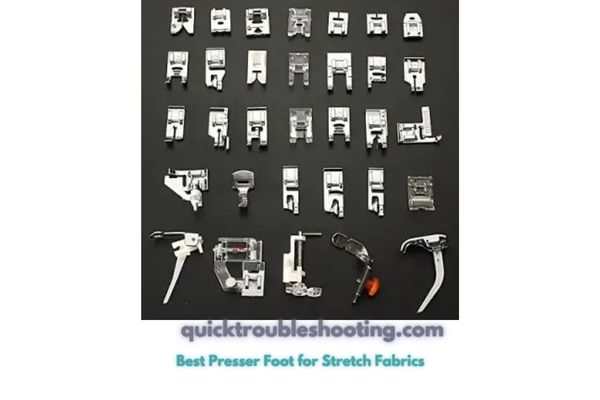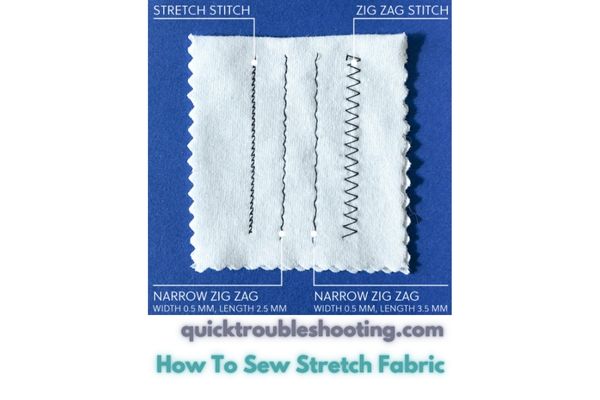How To Sew Stretch Fabric: Easy Instructions For Beginners
Are you eager to master the art of sewing stretch fabric? Do you want to learn how to sew stretch fabric? If you’ve been admiring my sought-after knit fabric sewing patterns but find yourself hesitating to dive into the world of stretch fabrics, fear not.
In this comprehensive guide, we’ll walk you through easy-to-follow instructions tailored for beginners, ensuring you not only conquer your apprehensions but also unlock the secrets to seamlessly stitching stretch fabrics. Let’s embark on this stitching journey together!
How To Sew Stretch Fabric Tutorial: Unveiling the Versatility
Learning how to sew stretch fabric might seem like a daunting task at first, but fear not; it’s a skill that can elevate your sewing prowess to new heights. Let’s explore a step-by-step tutorial to demystify the process and understand why incorporating stretch fabrics into your projects is not just rewarding but also opens up a world of creative possibilities.
Why Sew Using Stretch Fabric: Unlocking the Benefits
Sewing with stretch fabrics, particularly jersey and knit varieties, brings forth a myriad of advantages that cater to comfort, style, and versatility across all seasons. Let’s delve into the details to understand why incorporating stretch fabrics into your sewing projects is a game-changer.
- Seasonal Comfort: Jersey and knit stretch fabrics are unparalleled in their ability to provide comfort throughout the year. Regardless of the season, these fabrics adapt to different temperatures, making them an ideal choice for garments that can be worn in any weather.
- Versatility for All Occasions: Stretch fabric patterns offer a solution for every occasion. Whether you’re aiming for a stylish, casual, or smart look, these fabrics effortlessly cater to diverse fashion needs. The adaptability of stretch fabrics makes them a versatile choice for creating clothing suitable for a wide range of events and settings.
- Perfect for All Ages: One of the remarkable features of stretch fabrics is their suitability for individuals of all ages. From children’s patterns to clothing for adults, these fabrics provide endless possibilities. Understanding the stretch factor allows sewers to tailor outfits perfectly, ensuring a comfortable and stylish fit for every age group.
- Practicality and Easy Care: The allure of stretch fabrics extends beyond style. The practicality of having a fabric that hangs beautifully, dries without fuss, and is exceptionally comfortable makes it an appealing choice. The low-maintenance nature of these fabrics adds convenience to both everyday wear and special occasions.
- Strengthens Sewing Skills: Learning how to sew knit fabrics enhances your sewing repertoire. Once you master the art of laying out and cutting patterns for these adaptable fabrics, you gain confidence and inspiration to create fashion items for individuals of all ages. This skill becomes an added strength in your sewing toolkit.
- Accessibility with Regular Machines: The beauty of working with stretch fabrics lies in its accessibility. You don’t need specialized equipment like a serger; a regular sewing machine is sufficient to transform these adaptable knit fabrics into stylish garments. This accessibility makes sewing with stretch fabrics approachable for sewers at all skill levels.
- Ideal for Children’s Clothing: Stretch fabrics, in particular, shine when it comes to crafting clothing for children. The combination of comfort, flexibility, and durability makes them a perfect choice for garments that need to withstand the playful activities of youngsters.
- Creative Exploration: Finally, why not seize the opportunity to explore and bend the rules? Consider investing in jersey knit patterns and fabric for your next sewing project. By doing so, you open the door to a whole new world of exciting materials, innovative patterns, and enjoyable sewing ideas that await your creative touch.
Sewing with stretch fabrics goes beyond mere stitching; it’s about embracing comfort, style, and the joy of creative expression. So, don’t hesitate to dive into the world of stretch fabrics and discover the endless possibilities that await your sewing endeavors.
How To Sew Stretch Fabric: A Comprehensive Step-By-Step Guide
Learning how to sew stretch fabric is an exciting venture, but ensuring your seams align with the fabric’s stretch qualities is crucial for a successful outcome. Let’s dive into a detailed step-by-step guide, ensuring you have the right supplies and techniques to master the art of sewing stretch fabrics.
Step 1: Get The Right Supplies
Best Needles for Stretch Fabric:
- Choose the Right Needle: Use a ball-point or stretch needle with a rounded tip to prevent skipped stitches and holes in knit fabrics.
- Needle Selection: Opt for ball-point needles for stable and stretchy knits, and stretch needles for elastic and super stretchy fabrics like swim and dance lycra.

Best Thread for Stretch Fabric:
- Thread Selection: Strengthened polyester thread is preferable for stretch fabrics, as it is less likely to break.
- Consideration for Specialty Fabrics: When working with leotard or swimsuit patterns, polyester threads are less prone to rot from sweat or chlorine.

Best Sewing Machine Foot for Stretch Fabrics:
- Presser Foot Choice: For most knits, a regular presser foot works well.
- Special Consideration: For slippery or sticky fabrics, a Teflon sewing foot can aid in smooth gliding over the fabric.
- Optional Foot: A walking foot can be used to prevent fabric from sticking to the footplate.

Easiest Stretch Fabrics to Sew:
- Selecting Fabric: Choose a knit fabric with the appropriate stretch factor based on your sewing pattern.
- Stretch Factor Guidance: Pay attention to the pattern’s specified stretch factor (20%, 50%, 75%) and select a stable knit for beginners.
- Thickness Matters: Thicker knits are generally easier for beginners to sew than thinner ones.
Step 2: Pre-Wash The Fabric
- Importance of Pre-Washing: Knits tend to shrink more than woven fabrics, making pre-washing crucial.
- Special Attention to Rayon: If using rayon knit, which can shrink up to 10%, pre-washing becomes even more vital.
- Drying Tips: Lay the fabric flat during drying to prevent stretching, and gently press before cutting.
Step 3: How To Cut Stretch Fabric
- Pattern Weights vs. Pins: Use pattern weights or specially designed knit fabric pins instead of traditional pins to avoid holes.
- Flat Cutting: Ensure the fabric remains flat and unstretched during the cutting process.
- Avoiding Stretch While Cutting: Be cautious of overhanging fabric edges, cutting on a larger table or the floor as alternatives.
Step 4: Best Stitches For Stretch Fabric
- Experiment on Scrap: Before starting on your main piece, experiment with scrap fabric to find the best stitch.
- Stitch Selection: Refer to your sewing machine manual for stitch recommendations. A narrow zig-zag stitch is often preferred for its versatility.
- Narrow Zig-Zag Stitch: A narrow zig-zag stitch is commonly favored for its flexibility and ability to accommodate stretch.
- Explore Machine Settings: Adjust stitch length and width according to your fabric and preferences.
- Test and Tweak: Always test stitches on scrap fabric and make adjustments before sewing your main garment.
5 stretch stitches you can use for sewing knits
Here are 5 stretch stitches you can use for sewing knits:
- Straight stitch
- Stretch stitch
- Zig-zag stitch
- Lightning stitch
- 3 Step zig-zag
Option 1: Straight Stitch
- Fallback: If limited by a basic machine, a regular straight stitch can be used with caution. Stretch the fabric gently as you sew to retain some stretch in the stitches.
- Note: Stitches may appear loopy, but this prevents breakage when the fabric is stretched.
Option 2: Stretch Stitch (Triple Stitch)
- Feature: Some machines have a “stretch straight” stitch, moving forward two stitches and back one in each cycle.
- Advantages: While it takes a bit more time, the results in seam durability and stretch make it a valuable option.
Option 3: Zig Zag Stitch
- Settings: For a basic sewing machine, a narrow zigzag stitch is your go-to. Set the width between 0.5 – 1.0 and a stitch length of 3.0.
- Testing: Prioritize testing on a fabric scrap to ensure the desired stretch and stitch integrity.
Option 4: Lightning Stitch
- Description: Similar to a small zigzag but with slightly angled stitches, giving the appearance of almost straight stitches from a distance.
- Testing: Do a trial on a scrap, as this stitch may stretch the fabric slightly.
Option 5: Three Step Zig-Zag
- Description: This stitch incorporates three tiny stitches in each zig-zag, offering significant stretch suitable for various knit fabrics, including highly elastic lycra.
- Consideration: Due to its multiple stitches, it may take a bit longer to sew, but the added stretch is worth the effort.
Step 5: Sew Hems On Stretchy Fabric
- Professional Hems: Achieve polished hems with a twin needle, creating a stretch stitch resembling two rows of straight stitches on the front and a small zigzag on the back.
- Twin Needle Options: Twin needles with different gaps offer varied looks for your hems.
- Additional Resources: Explore my article on sewing knit hems for guidance, including using a zigzag stitch.
Hemming Tips:
- Hemming Tape: Useful for hems that appear stretched or wrinkled.
- Consider a Coverstitch Machine: Ideal for frequent knit hemming, a coverstitch machine produces double-stitched seams on stretch fabric.
Fancy Hem Finishes: Lettuce Hem
- Description: Achieve a decorative lettuce hem by zigzagging over a folded edge while gently stretching the fabric.
- Result: The result is a charmingly curly hem, adding a touch of flair to your garment.
Step 6: How To Finish Seams On Stretch Fabric
- Surprising Fact: Seams in stretch fabric don’t necessarily need finishing, a time-saving benefit unique to knit fabric patterns.
- Optional Finish: If desired, use a wider zigzag with a width of 3.0 and length of 3.0 for a finished seam appearance.
By incorporating these stretch stitches and finishing techniques, you’ll not only ensure the longevity of your stretch fabric creations but also add a professional touch to your sewing projects.
Extra Tips for How to Sew Stretch Fabric: Enhancing Your Skills
Embarking on the journey of sewing stretch fabric opens up a world of creative possibilities, but mastering specific fabrics like Lycra and Spandex requires additional attention. Here are some extra tips, step-by-step, to ensure success in handling these materials and selecting the right patterns.
Sewing Lycra And Spandex: Sewing Dance and Swimwear Fabrics
- Specialized Fabrics: Fabrics like Lycra and Spandex, common in dance and swimwear, often have a stretch factor of at least 75%.
- Essential Tools: For these fabrics, stretch needles and a Teflon foot become even more crucial than with regular knits.
- Refer to Additional Resources: For an in-depth guide on sewing leotards, consult an additional article with extra tips and tricks tailored to working with Lycra and Spandex.
Best Stretch Fabric Patterns: Exploring Treasurie Sewing Patterns
- Top-notch Patterns: Treasurie sewing patterns are renowned for their suitability with stretch fabrics.
- Compatibility with Regular Machines: All patterns can be sewn using a regular sewing machine, making them accessible to sewers of all skill levels.
- Understanding Negative Ease: Stretch patterns differ from woven patterns and may have measurements smaller than the body to account for stretching, known as negative ease.
- Before Purchasing Patterns: Always check if a pattern is suitable for stretch fabrics before purchasing.
Don’t Push or Pull: Guiding Fabric Through the Machine
- Gentle Handling: When sewing fabric pieces together, guide the fabric gently through the sewing machine’s feed dogs.
- Avoid Pushing or Pulling: Resist the urge to push or pull the fabric, allowing the machine to naturally feed it through.
- Optimal Machine Speed: Set your machine to a slow speed to facilitate careful guidance through the feed dogs.
- Consider Machine Adjustments: Some machines may recommend loosening the pressure; consult your manual to determine if this is applicable.
Pressing: Refining the Final Look
- Post-sewing Inspection: After sewing, inspect the stretch seams, especially in areas like neckbands, where stretching may occur.
- Gentle Pressing with Steam: If seams look slightly stretched, perform a gentle press with steam to restore the fabric to its intended shape.
- Further Reading: Delve into additional resources on pressing for sewing to refine your skills in achieving professional-looking results.
How to Sew Stretch Fabric FAQs
How Do I Handle Seams Puckering in Stretch Fabric?
Seam puckering in stretch fabric can be minimized by adjusting your machine settings. Try using a longer stitch length, reducing the pressure on your presser foot, and experimenting with different thread tensions. Additionally, pressing seams with a steam iron can help relax the fabric and reduce puckering.
Can I Use Pins When Sewing Stretch Fabric?
While pins can be used with caution, consider alternatives to avoid potential damage to the fabric. Try using clips or fabric weights to secure pieces together during sewing. If using pins, place them within the seam allowance to prevent visible holes in the finished garment.
What Is the Importance of Pre-Washing Stretch Fabric?
Pre-washing stretch fabric is crucial to account for potential shrinkage. Knits, in particular, tend to shrink more than woven fabrics. Pre-wash your fabric according to its care instructions, lay it flat to dry to prevent stretching, and press it gently before cutting to ensure accurate sizing in the final garment.
How Do I Sew Hems on Stretchy Fabric Without Stretching Them Out?
Achieving non-stretched hems involves selecting the right techniques. Consider using a twin needle for a professional finish, and explore hemming tape to address any stretching issues. Additionally, a coverstitch machine can be a valuable investment for producing double-stitched seams on stretch fabric without compromising the hem’s stability.
What Is the Best Way to Finish Seams in Stretch Fabric?
Unlike woven fabrics, stretch fabrics do not necessarily require seam finishing due to their inherent resistance to fraying. However, if you prefer finished seams, use a wider zigzag stitch with a width of 3.0 and length of 3.0. This provides a clean appearance while maintaining the fabric’s stretchability.
How To Stop Stretch Fabric Curling:
To prevent stretch fabric from curling, consider the following:
- Fabric Selection: Opt for stable knits that are less prone to curling.
- Stitch Choices: Use stitches that promote stability, such as a narrow zigzag or a three-step zigzag.
- Pressing Techniques: Gently press the fabric with steam during and after sewing to set the stitches and minimize curling.
Can You Sew Stretch Fabric On A Normal Sewing Machine?
Yes, you can sew stretch fabric on a normal sewing machine. Key considerations include:
- Needle Choice: Use a ball-point or stretch needle to prevent skipped stitches.
- Stitch Selection: Opt for stretch-friendly stitches like zigzag, three-step zigzag, stretch stitch, lightning stitch, or even a straight stitch with careful handling.
Can You Use Straight Stitch On Stretch Fabric?
While a straight stitch can be used on stretch fabric, it requires careful handling. Here’s how:
- Gentle Stretching: Gently stretch the fabric as you sew to allow for movement without compromising stitch integrity.
- Testing: Conduct a test on a fabric scrap to ensure the straight stitch accommodates the fabric’s stretch without causing breakage.
Do You Need A Special Needle To Sew Stretch Fabric?
Yes, using a special needle is crucial for sewing stretch fabric. Consider the following:
- Needle Types: Choose a ball-point needle for stable and stretchy knits, while a stretch needle is suitable for elastic and super stretchy fabrics.
- Needle Size: Match the needle size to the thickness of your fabric for optimal results.
- Needle Brands: Popular brands like Klasse and Schmetz offer reliable stretch needles.
Conclusion: How To Sew Stretch Fabric
In conclusion, mastering how to sew stretch fabric opens the door to creating comfortable, stylish, and versatile garments suitable for various occasions. Key considerations include selecting the right needles, stitches, and patterns tailored for stretch fabrics.
Techniques such as gentle guiding through the sewing machine, proper pre-washing, and thoughtful hemming contribute to successful outcomes. Whether you’re working with Lycra, Spandex, or other stretchy materials, understanding these tips and FAQs will empower you to confidently navigate the world of sewing stretch fabrics, transforming them into professional-looking and resilient creations.
